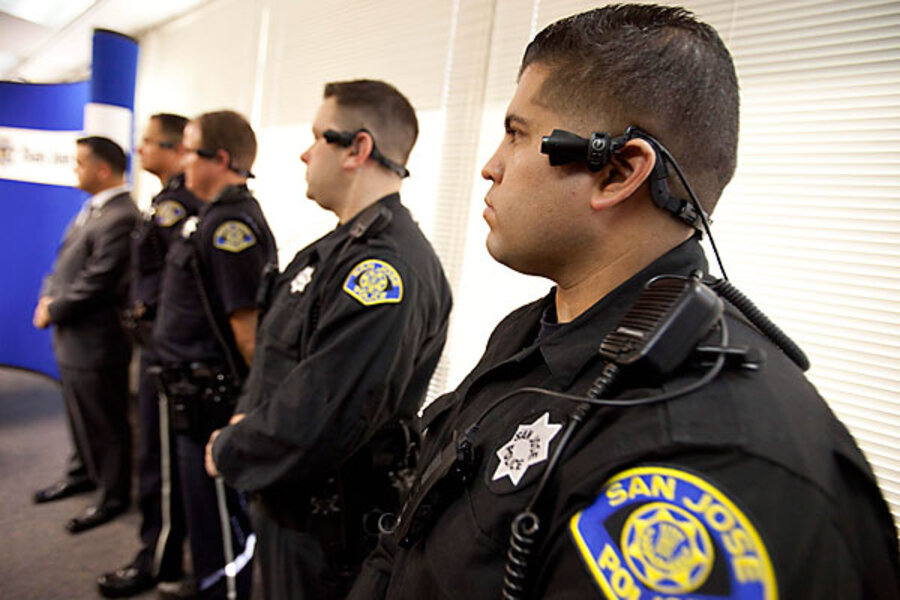San Jose police get ear-mounted video cameras in battle for image
Loading...
| San Francisco
Cellphone videos of police in the throes of disruptive arrests have become something of an Internet fixture. A new one seems to pop up on YouTube weekly, usually provoking a torrent of criticism aimed at officers. Sometimes it’s warranted, sometimes there’s more to the story.
But in a sign of video's rising importance in police-citizen encounters, at least one police department is taking steps to ensure the officers’ point of view is also recorded.
Eighteen patrol officers in San Jose, Calif., where police have recently come under fire over allegations of abuse, are the first in the country to test ear-mounted cameras (which resemble Bluetooth headsets) that can record everything the officer sees. Other police departments are reported to be testing shoulder-mounted cameras.
“Everyone has video cameras out there today,” says Tom Smith, chairman and cofounder of Taser International, the Arizona company that developed the Axon video system and also makes the controversial Taser stun guns carried by 400,000 police officers worldwide. When a bystander records an arrest on a cellphone video, he says, “typically they only capture the incident after it happens." The ear-mounted cameras allow the police officer "to capture the beginning of the event from their perspective.”
Taser International is paying for the San Jose pilot test of a system that would cost as much as $2,888 per officer for the first year of use if the department decides to keep the system, according to the San Jose Mercury News.
Video's role in police abuse cases
Video is increasingly playing a role in cases of alleged police abuse. Cellphone videos of a New Year’s Day police shooting in Oakland, Calif., led to criminal charges of an officer earlier this year, while a November cellphone video of an arrest made by a transit officer in Oakland led to an inquiry into the officer's conduct.
Taser International’s Smith says he believes that in most cases a video showing the entire interaction between the officer and suspect will exonerate the officer. A 2002 study by the International Association of Chiefs of Police (IACP) showed that in-car camera systems exonerated the actions of state troopers 93 percent of the time. In 2008, the IACP says, at least 72 percent of all state patrol vehicles were outfitted with some kind of in-car video system.
“It's really powerful stuff,” says Mike Fergus, a program manager at the IACP who has studied the use of in-car camera systems. He says video technology has had a transformative effect on law enforcement.
Camera's eye inspires good behavior all round
In many cases, the mere presence of the camera can change the interaction between police and the public. “Just the awareness of being recorded [means officers are] a little more careful they are maintaining policy,” Mr. Fergus says.
And, he says, when a situation appear to be getting out of hand an officer will sometimes tell a suspect they are being recorded. “And that can just calm things down,” he says.
But just as the introduction of in-car video technology led to a raft of technical and legal concerns, Fergus suggests the use of officer-mounted camera systems will also be met with legal questions. How long will the video be stored? Who has control over it? Can the public gain access to the video that is recorded by the officers? Those are just a few of the unanswered questions surrounding this evolving technology.
“If an agency is going to start using [officer-mounted cameras],” Fergus says, “they have to have a policy.”
----
Follow us on Twitter.





